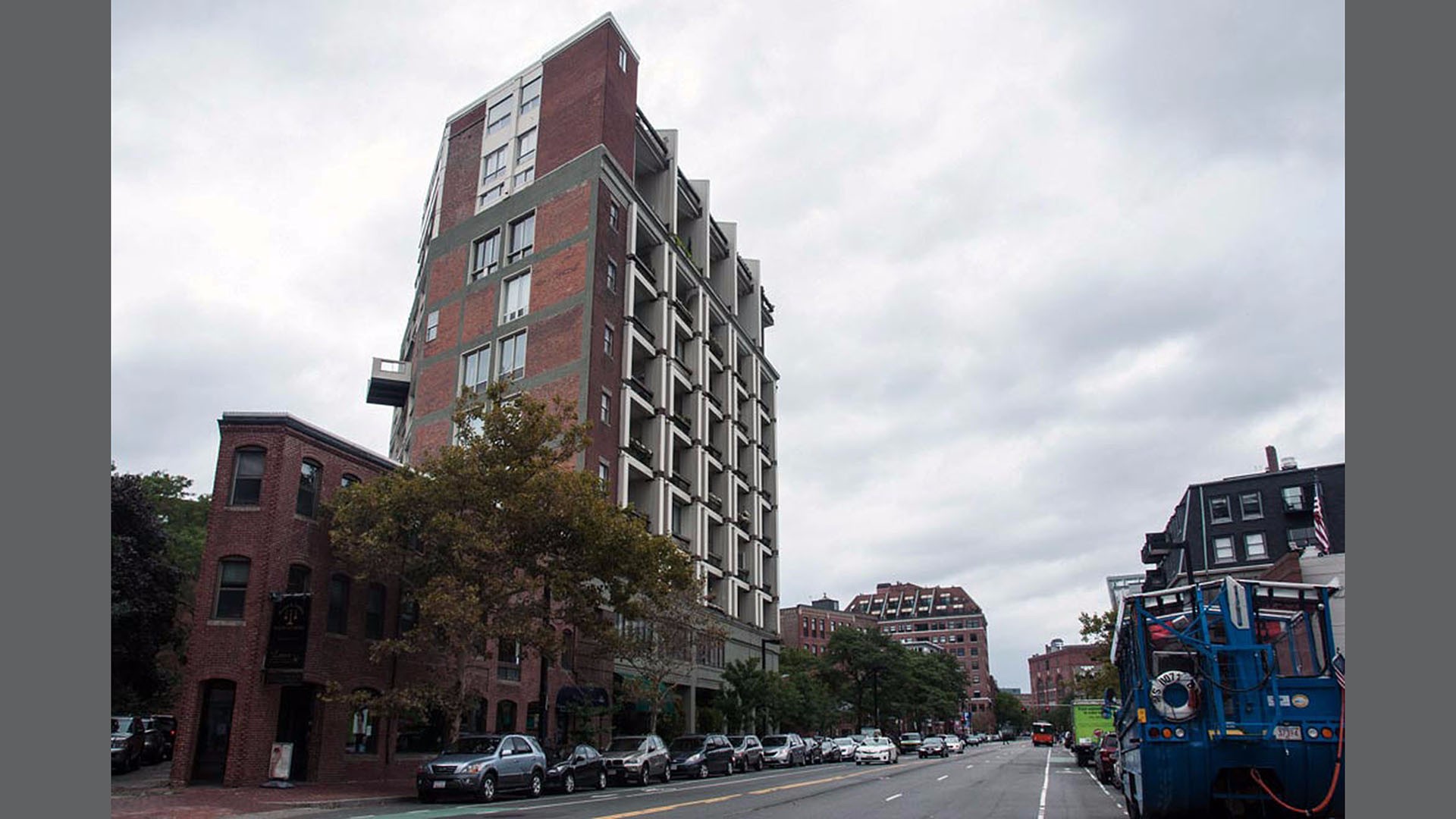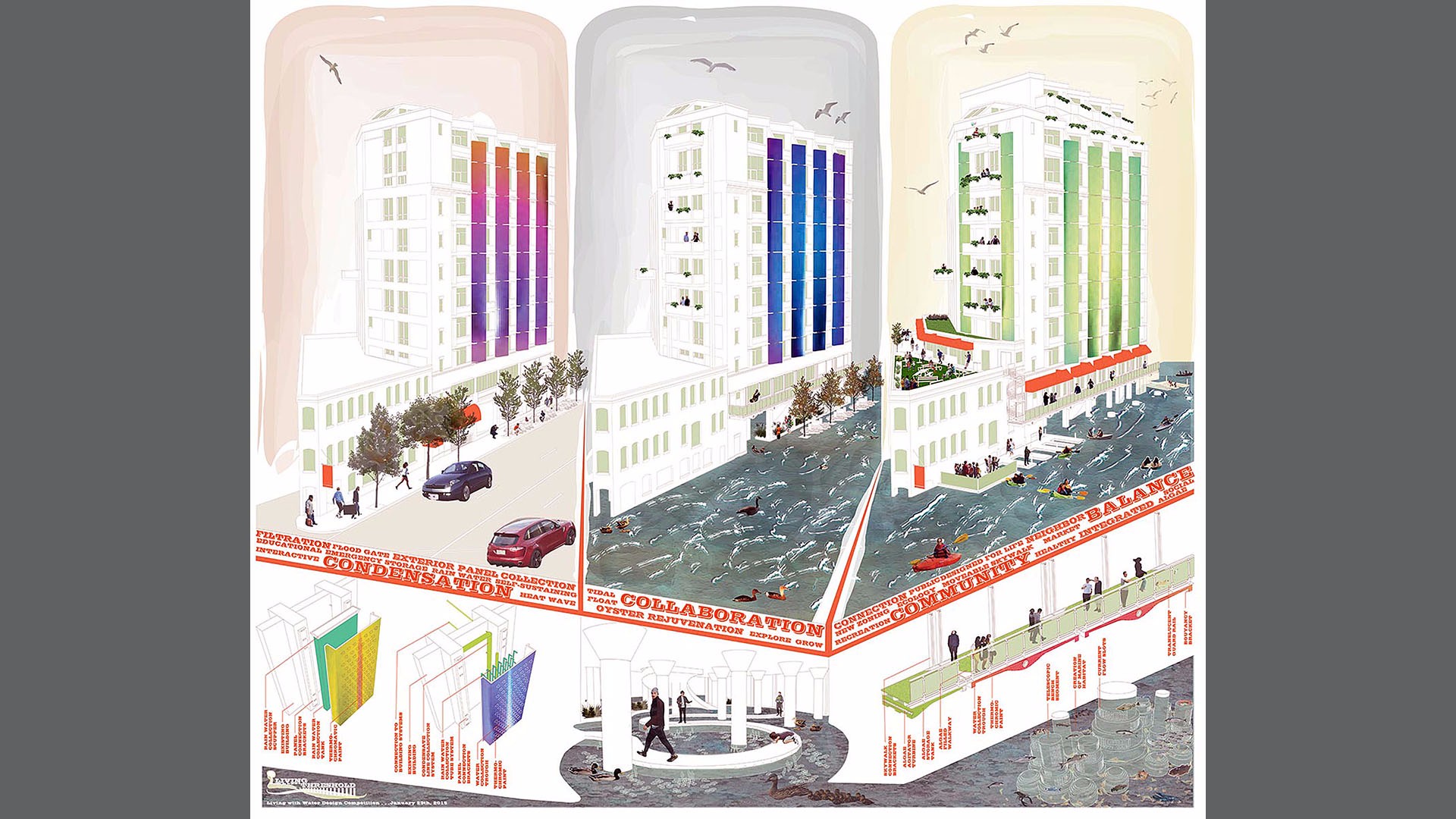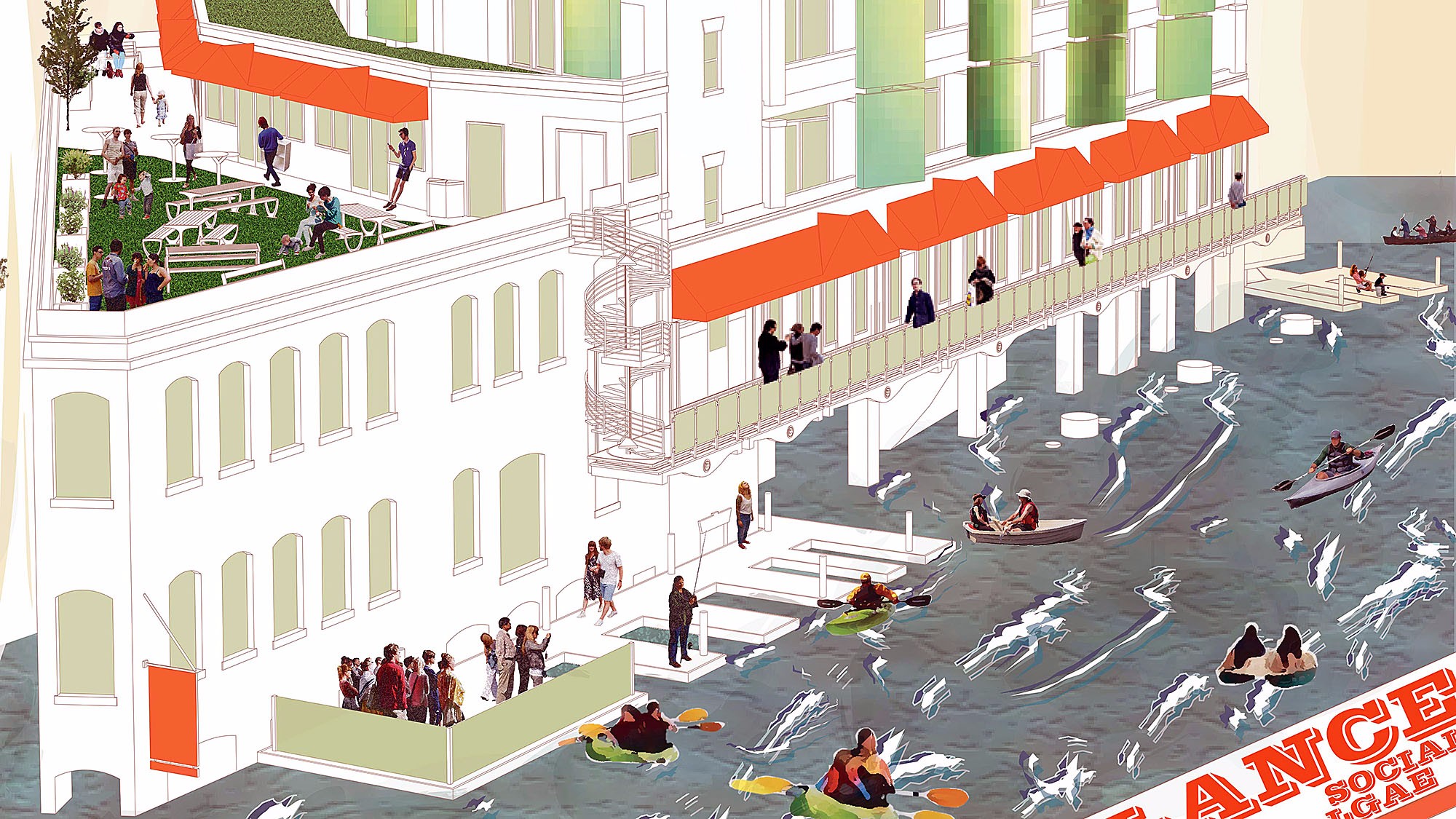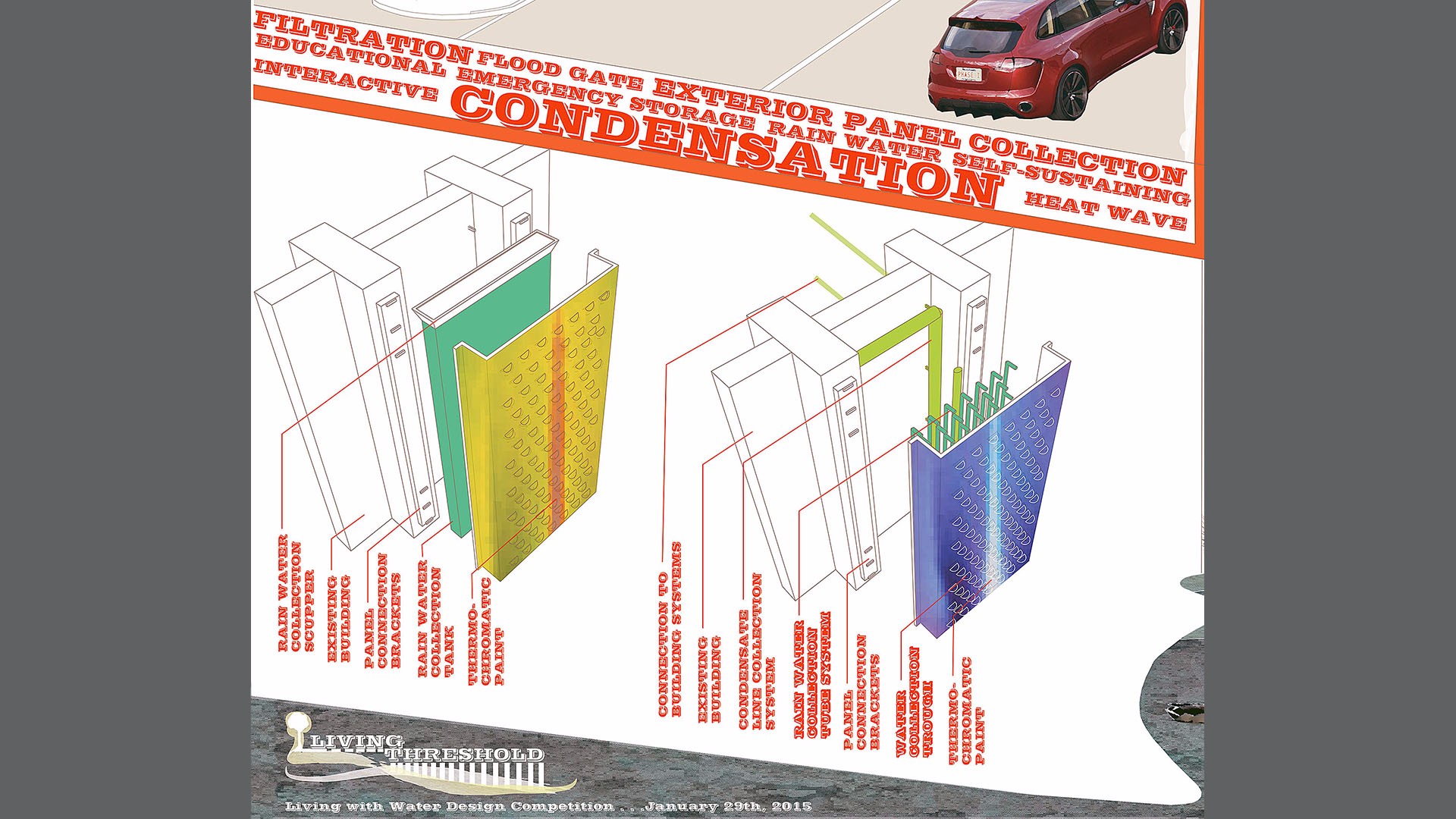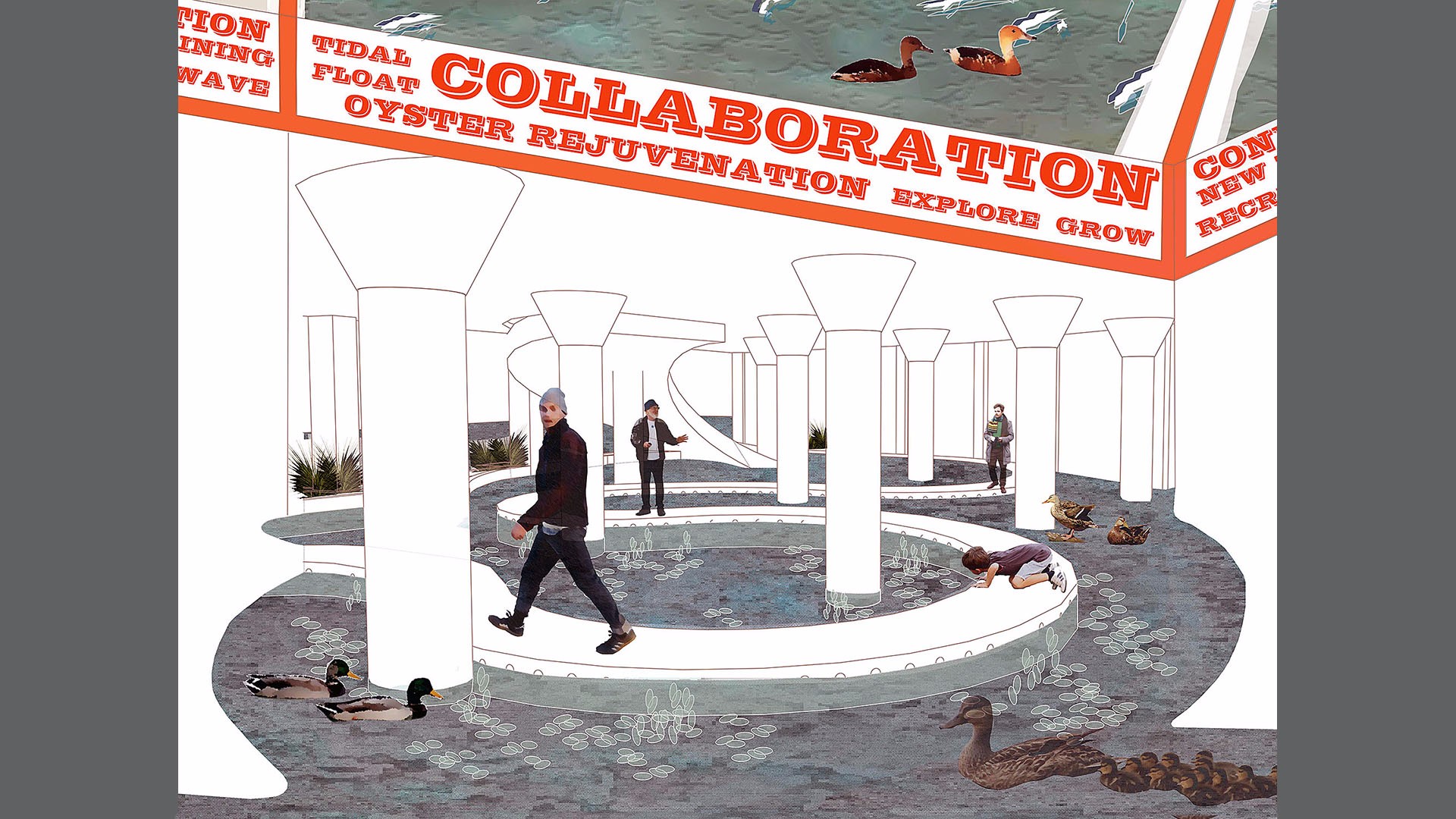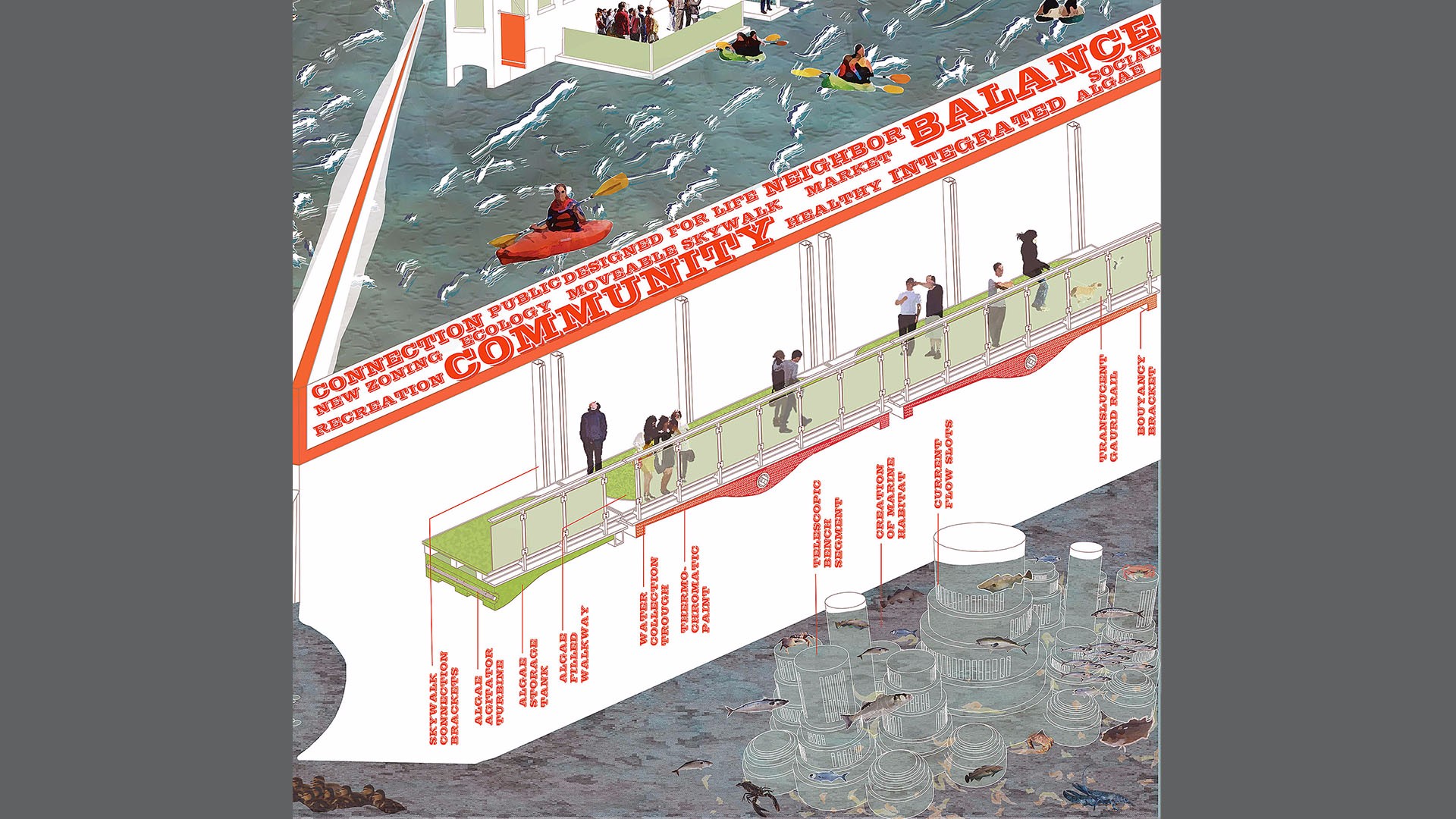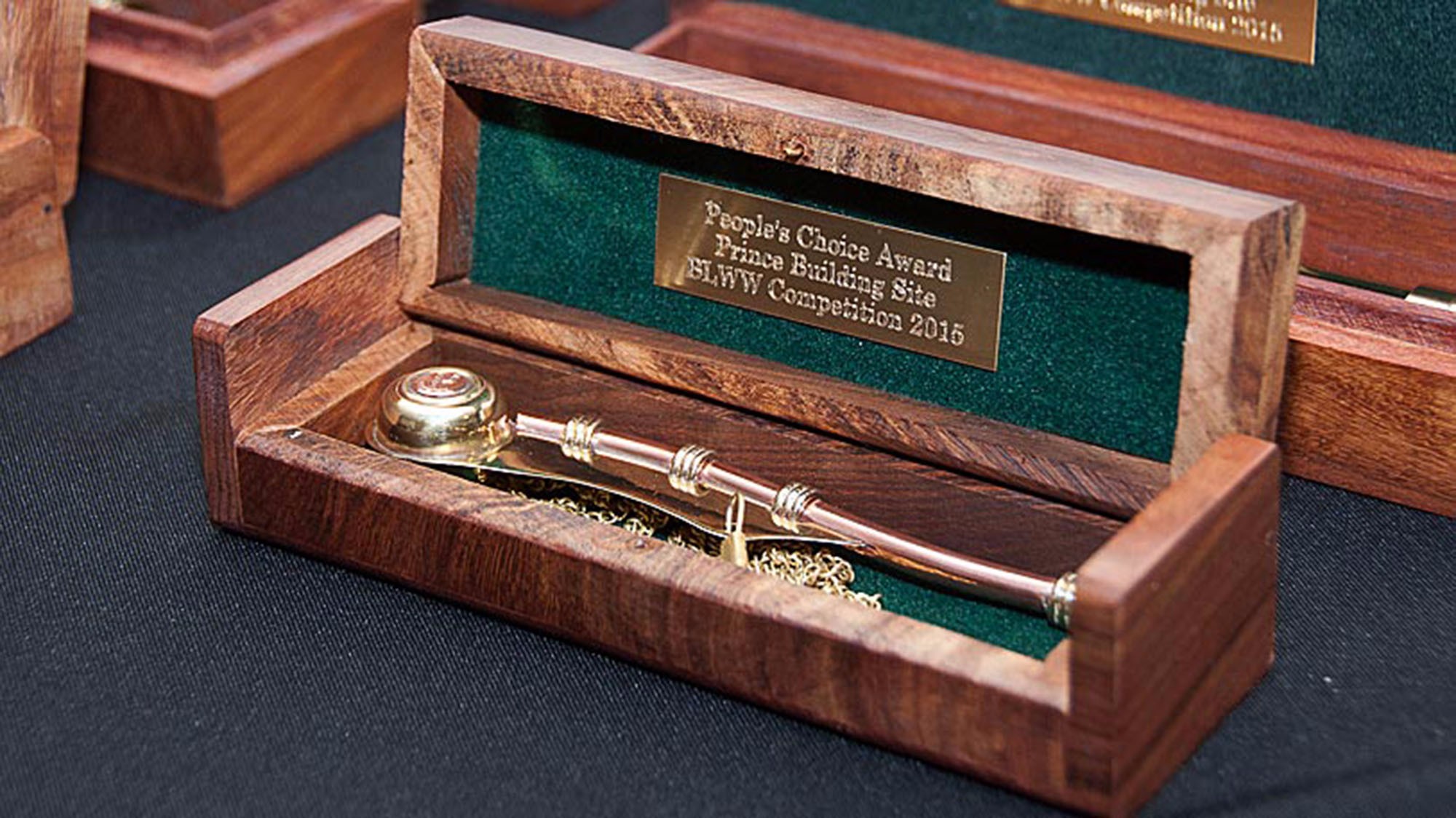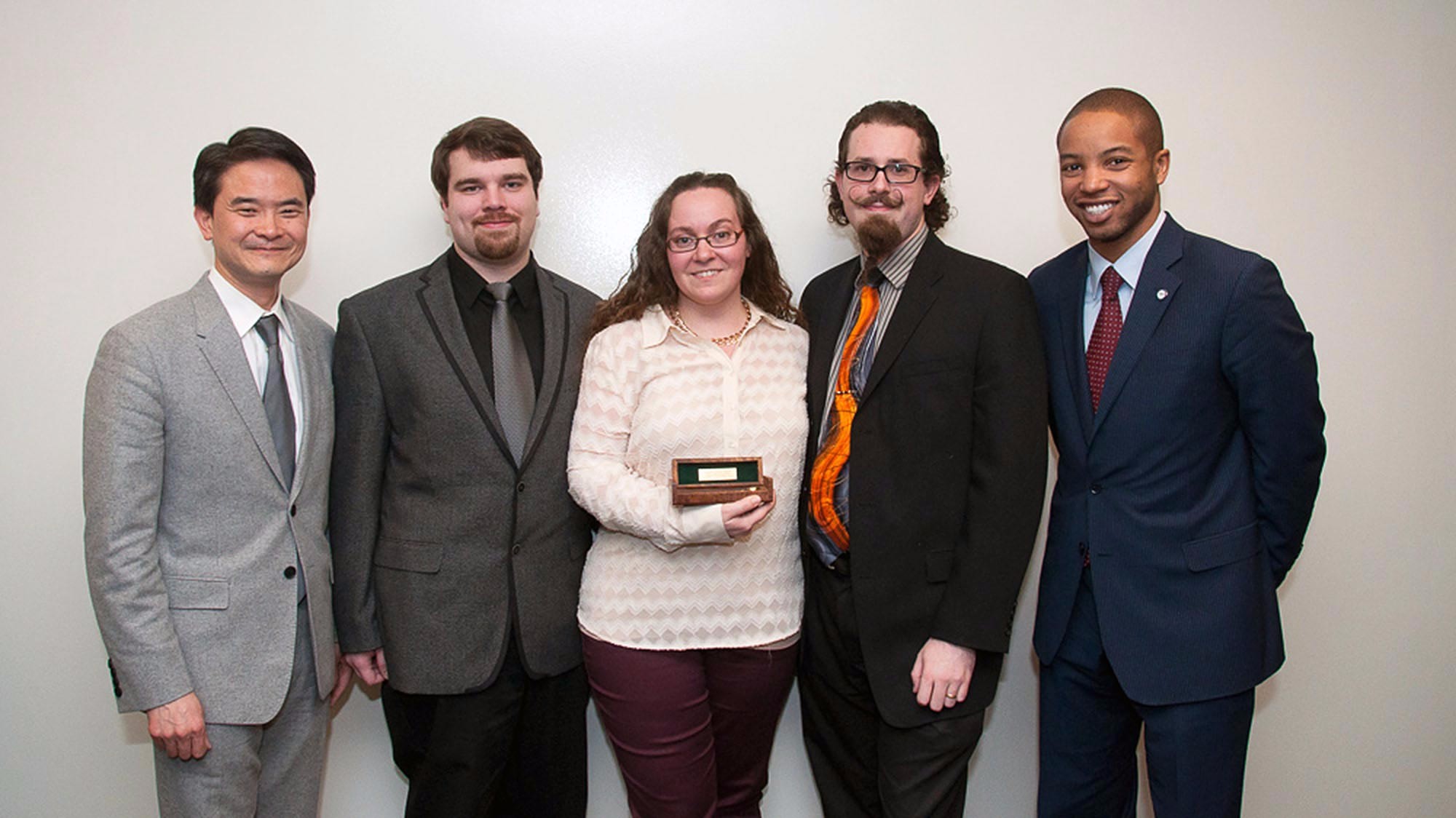Boston Living with Water Design Competition 2015
Winner of People's Choice Award
Location: The Prince Building, Boston's North End
Sponsored by: City of Boston, the Boston Harbor Association, the Boston Society of Architects, and the Boston Redevelopment Authority
"The Living Threshold": How do we create the beginning of the best possible waterfront? The threshold seeks to answer that by promoting good design that leads to resilient, accessible waterfronts allowing us to live with the water instead of resisting its evolution. Our approach engages interdisciplinary and participatory design that creates an urban edge condition achieving multiple goals for the holistic health of the local ecosystem and community together.
As we define an irregular, curvilinear shoreline with various inlets, the porous, gently sloping terraces of our floating benches establish shallow water zones with deep light penetration. As sea level rises over time, the benches become sculptural extrusions creating conditions promoting fish spawning, food production and wake energy reduction. The reduced turbulence minimizes scour and natural stresses on the shore, mitigates noise, and makes the area safe for recreational activities like kayaking and rowboating.
We provide safe access to the water by co-opting the existing vehicular ramp and transforming it into an internal path leading visitors down to a wondrous tidal cove. The reclamation of the salt-resisting concrete, which once served as the parking garage, now provides the varied surfaces, rough textures and differently sized materials required to nurture a diverse fish habitat along with salt marsh grasses that will enhance the location’s habitat value. By promoting mussel, oyster, and clam shells throughout this cove, we encourage the formation of a living water-filtration layer that reduces excessive nutrients and pollutants in the surrounding waters and storm runoff.
The skywalk – an elevated public platform serving as neighborhood circulation, and a floating pier promote the docking of boats alongside the shoreline structure. The skywalk is designed to rise along tracks mounted to the building structure if a storm event occurs, and by keeping the design modular and flexible, will endure wave action and serve as roll-on / roll-off access for emergency aid; improving emergency response time to the building’s residents. Small turbines collect coastal winds at the base of the skywalk aerating algae beds built into the platform structure itself. These blooms oxygenate the local microclimate, while establishing a new variation of green space along the public way that further creates a new food source back in the tidal cove below.
While maintaining the existing building structure is key to celebrating its heritage, we enhanced the facade with a system of replicable water-collection panels, which serve functional and aesthetic properties. The uppermost panels contain rain collection cisterns, which once filled can supply enough water to nourish the building’s occupants during a crisis for three days. The lower panels have a twofold operation. A series of scuppers arrayed across the unit collect rain water, and a two-pipe system connected to the building’s existing environmental systems produce and collect condensation. The collected water is channeled into a central cistern for various needs of the building and its residents. Thermochromic paint applied to the panels graphically enhances the facade while conveying real-time climate readings.
